1. Describe Stakeholders
1.1. Add Client(s)
1.1.1. Engineering Students
1.1.1.1. What are their goals?
1.1.1.1.1. To get competencies
1.2. Add Decision Maker(s)
1.2.1. Program Head
1.2.1.1. What are their goals?
1.2.1.1.1. To manage an engineering program for the competencies training
1.3. Add Professional(s)
1.3.1. Faculty
1.3.1.1. What are their goals?
1.3.1.1.1. To develop the competencies in engineering Students
1.4. Add Witness(es)
1.4.1. Society
1.4.1.1. What are their goals?
1.4.1.1.1. To have engineering professionals prepared for Digital Transformation
2. Describe Terminology
2.1. CommonKADS
2.2. Engineering Education
2.3. Smart Education/Education 4.0
3. Set Problem Statement
3.1. The present engineering education does not provide the necessary competencies for Digital Transformation.
4. Assess Problem as Difficulties
4.1. Ascertain Consequences
4.1.1. Lack of update in current engineering education
4.1.1.1. ...leads to...
4.1.1.1.1. unskilled labor
4.1.1.1.2. Loss of stakeholders
4.2. Ascertain Causes
4.2.1. Lack of strategic guidelines
4.2.2. Lack of companies-universities partnerships
4.2.2.1. ...follows from...
4.2.2.1.1. Lack of strategic guidelines
4.2.3. Lack of update in faculty training
4.2.3.1. Why?
4.2.3.1.1. Lack of strategic guidelines
4.2.4. Fragmented syllabus
4.2.4.1. ...follows from...
4.2.4.1.1. Lack of update in syllabus
4.2.5. Labs out of dated
4.2.5.1. Why?
4.2.5.1.1. Lack of strategic guidelines
5. Assess Problem as Solutions
5.1. Alleviate Consequences
5.1.1. No longer Lack of update in current engineering education
5.1.1.1. ...leads to...
5.1.1.1.1. No longer unskilled labor
5.1.1.1.2. No longer Loss of stakeholders
5.2. Lessen Causes
5.2.1. No longer Lack of strategic guidelines
5.2.2. No longer Lack of companies-universities partnerships
5.2.2.1. ...follows from...
5.2.3. No longer Lack of update in faculty training
5.2.4. No longer Fragmented syllabus
5.2.4.1. ...follows from...
5.2.4.1.1. No longer Fragmented syllabus
5.2.5. No longer Labs out of dated
6. Design Problem Template
6.1. Improve
6.1.1. The present engineering education does not provide the necessary competencies for Digital Transformation.
6.2. By
6.3. That satisfies
6.4. In order to help
6.4.1. Engineering Students achieve(s) To get competencies
6.4.2. Program Head achieve(s) To manage an engineering program for the competencies
6.4.3. Faculty achieve(s) To develop the competencies in engineering Students
6.4.4. Society achieve(s) To have engineering professionals prepared for Digital Transformation
7. Describe Practice
7.1. To describe guidelines to conceive engineering programs.
7.1.1. ...is a generalization of...
7.1.1.1. Engineering education
7.1.2. properties
7.1.2.1. Reusable
7.1.2.1.1. properties
7.1.3. activities
7.1.3.1. To define syllabus
7.1.3.1.1. properties
7.1.3.1.2. subactivities
7.1.3.1.3. tooling
8. Describe Problematic Phenomena
8.1. Descriptive Questions
8.1.1. What is "The present engineering education does not provide the necessary competencies for Digital Transformation." like?
8.1.1.1. Engineers without proper competencies for Digital Transformation
8.1.2. What are its properties?
8.1.2.1. Fragmented syllabus
8.1.2.2. Departamental structure
8.1.2.3. e-Learning
8.1.2.4. Based on contents
8.1.2.5. Out of dated syllabus
8.1.2.6. Faculty as the protagonists
8.1.2.7. Passive students
8.1.2.8. unflexible syllabus
8.1.3. How can it be categorized?
8.1.3.1. Pragmatic Problem
8.1.4. How can we measure it?
8.1.4.1. OECD data (verify the report about technological areas)
8.1.4.2. MEC report (not published yet)
8.1.5. What is its purpose?
8.1.5.1. Competent engineers for Digital Transformation
8.1.6. What are its components?
8.1.6.1. Faculty
8.1.6.2. Students
8.1.6.3. Program Head
8.1.6.4. Common structure
8.1.6.5. Specialized labs
8.1.6.6. Educational Technologies
8.1.6.7. Stakeholders
8.1.7. How do the components relate to one another?
8.1.7.1. They do not survive without each other. Although, some of them are out of date and/or have problematic relationship (e.g., the Industry)
8.1.8. What are all the types of "The present engineering education does not provide the necessary competencies for Digital Transformation."?
8.1.8.1. Online
8.1.8.2. Face-to-face
8.1.8.3. Hybrid
8.1.9. How does "The present engineering education does not provide the necessary competencies for Digital Transformation." differ from similar problems?
8.1.9.1. It is drived at or by the university.
8.2. Occurrence Questions
8.2.1. How often does "The present engineering education does not provide the necessary competencies for Digital Transformation." occur?
8.2.1.1. All the time.
8.2.2. What is an average amount of "The present engineering education does not provide the necessary competencies for Digital Transformation."?
8.2.2.1. Almost all the universities need to update the Engineering Education in Brazil.
8.2.3. How does "The present engineering education does not provide the necessary competencies for Digital Transformation." normally work?
8.2.3.1. With traditional learning, focused on contents, without context.
8.2.4. What is the process by which "The present engineering education does not provide the necessary competencies for Digital Transformation." happens?
8.2.4.1. Student studies to answer tests, resolves exercises and lab experiments.
8.2.5. In what sequence do the events of "The present engineering education does not provide the necessary competencies for Digital Transformation." occur?
8.2.5.1. First at the university, then at the workplaces.
8.2.6. What are the steps "The present engineering education does not provide the necessary competencies for Digital Transformation." goes through as it evolves?
8.2.6.1. By a sequential syllabys with pre-requisites between courses.
9. Requirements
9.1. Functional Requirements
9.2. Non-functional Requirements
9.2.1. Structural
9.2.1.1. Coherence
9.2.1.2. Consistency
9.2.1.3. Modularity
9.2.1.4. Conciseness
9.2.2. Usage
9.2.2.1. Usability
9.2.2.2. Comprehensibility
9.2.2.3. Learnability
9.2.2.4. Customisability
9.2.2.5. Suitability
9.2.2.6. Accessibility
9.2.2.7. Elegance
9.2.2.8. Fun
9.2.2.9. Traceability
9.2.3. Management
9.2.3.1. Maintainability
9.2.3.2. Flexibility
9.2.3.3. Accountability
9.2.4. Environmental
9.2.4.1. Expresiveness
9.2.4.2. Correctness
9.2.4.3. Generality
9.2.4.4. Interoperability
9.2.4.5. Autonomy
9.2.4.6. Proximity
9.2.4.7. Completeness
9.2.4.8. Effectiveness
9.2.4.9. Efficiency
9.2.4.10. Robustness
9.2.4.11. Resilience
10. Design Purposeful Artefact <name your artefact>
10.1. Description
10.2. Technological Platforms
10.3. Requirements
10.4. Components
11. Type of Contribution
11.1. A new solution for a new problem
11.2. A known solution for a new problem
11.3. A new solution for a known problem
11.4. A known solution for a known problem
12. Type of Contribution
12.1. A new solution for a new problem
12.2. A known solution for a new problem
12.3. A new solution for a known problem
12.4. A known solution for a known problem
13. Type of Contribution
13.1. A new solution for a new problem
13.2. A known solution for a new problem
13.3. A new solution for a known problem
13.3.1. The guidelines using CommonKADS
